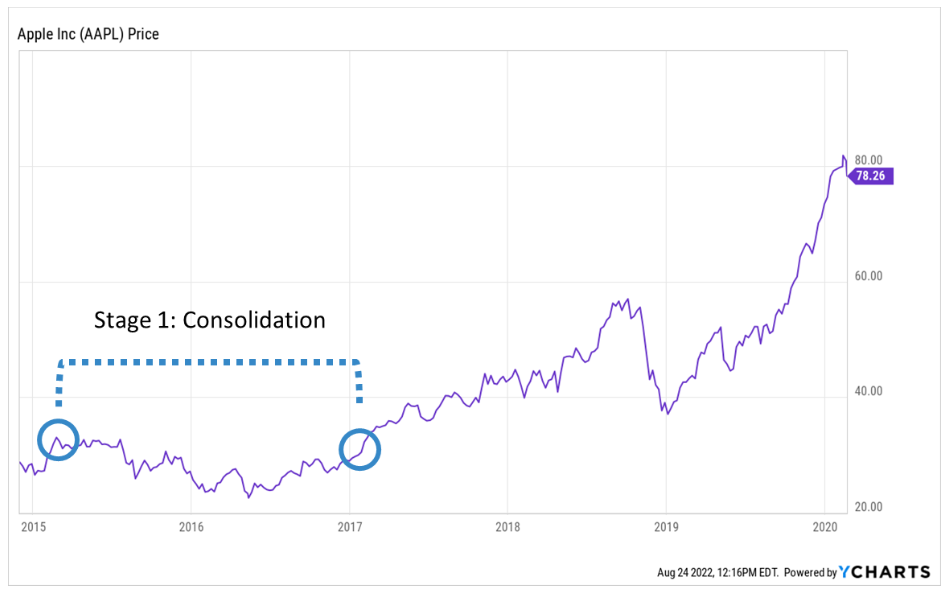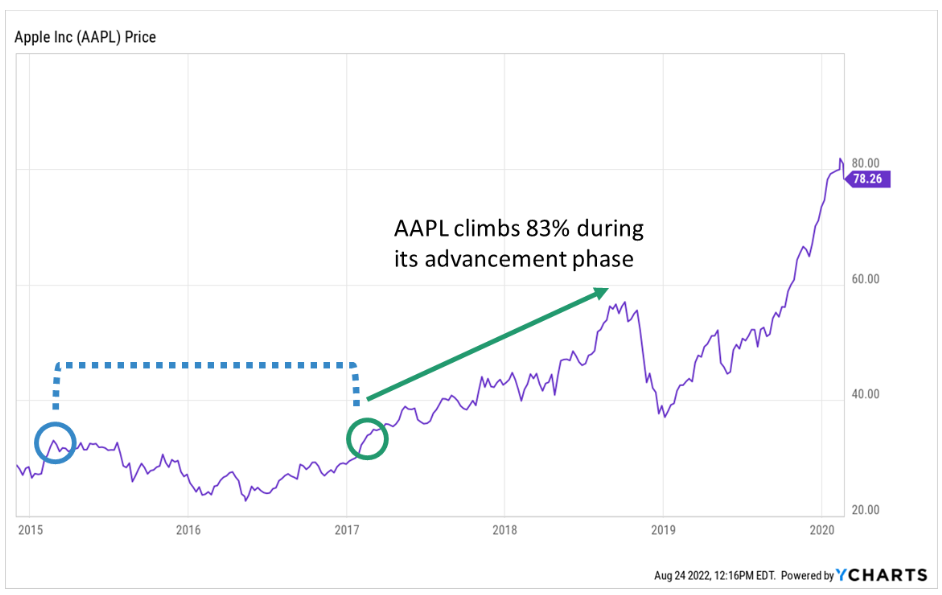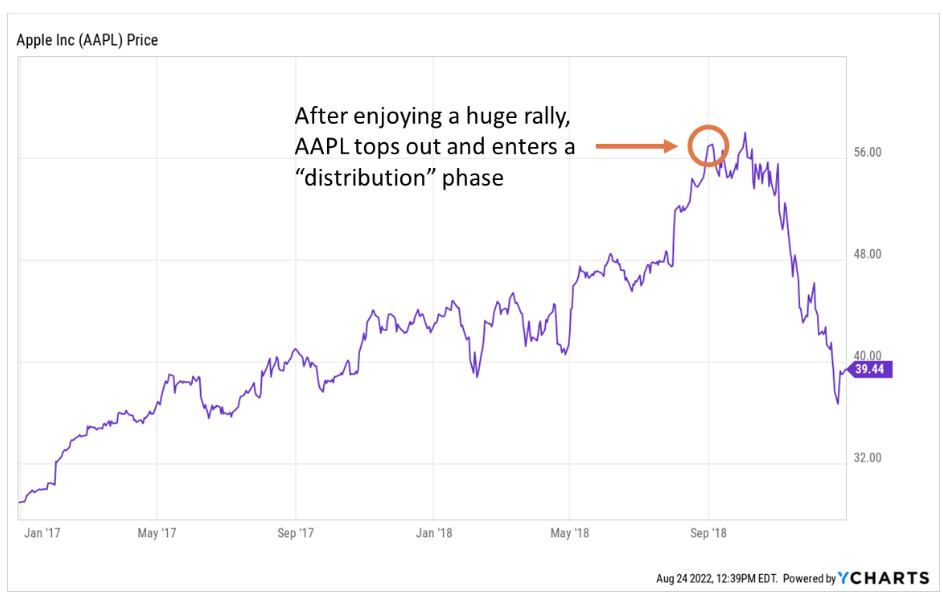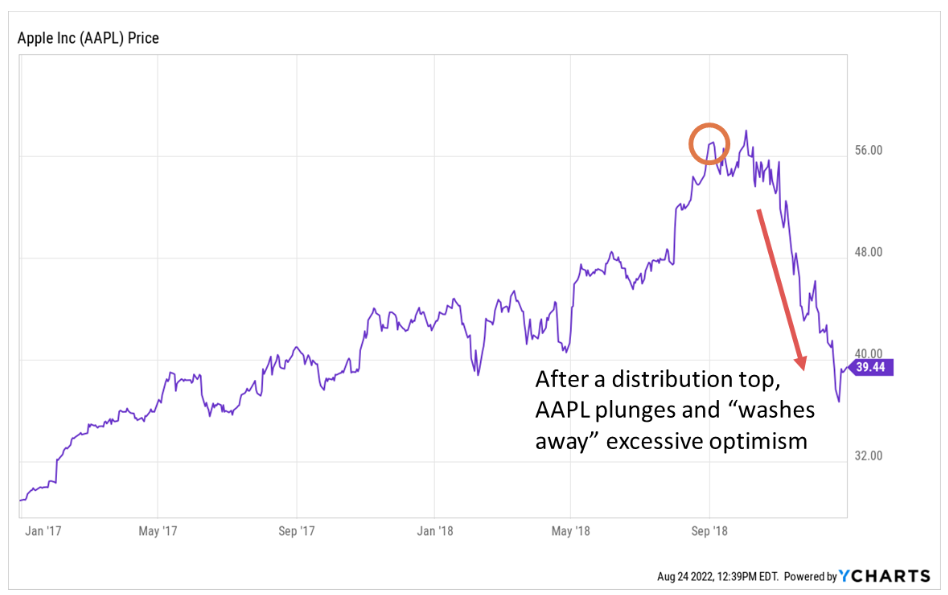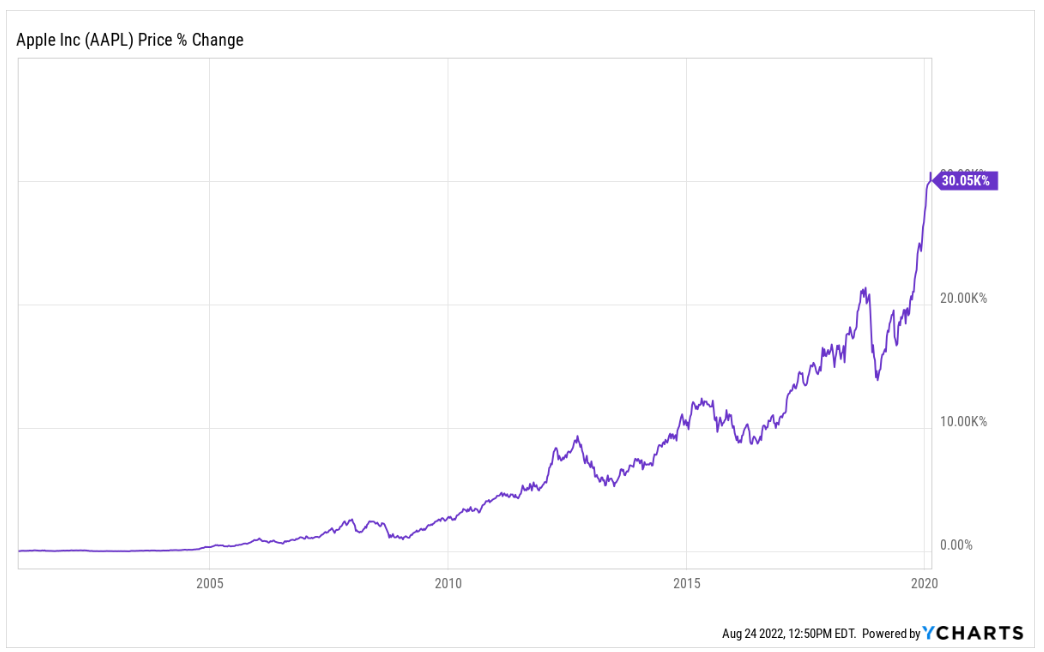Over the next five minutes, you’re going to learn something that will change the way you look at markets forever. And it will help you win big as a new bull market marches into town in 2023.
I know that sounds like quite an exaggeration, but it’s true.
After reading this, you’ll probably look back on so many of your investments that went wrong and just shake your head…
“Oh, I get it now!”
Here’s the general idea. Every stock follows the same repeatable, predictable pattern. That pattern occurs in four stages. In some of those stages, stocks rise. In others, they fall. The key to making money in any stock, in any market, at any time, is to buy and sell stocks only at the right stages.
It’s called stage analysis – a simple yet well-guarded secret to generating wealth on Wall Street. And very few people know about it.
That’s why if you learn about this hidden pattern today, you could be equipped with an almost unfair advantage over every other investor.
So… let’s get right into this hidden pattern and the secret stages that all stocks follow.
Stage 1: Consolidation
As exciting as it can be to watch top-performing stocks ring up gains, they actually spend a lot of time moving sideways.
During these periods – called consolidation stages – not much happens in the stock.
A consolidation stage is characterized by sideways movement in the stock price, as seen in the chart of Apple (AAPL) below. The highlighted area is a consolidation stage.
The lack of a stock’s forward movement during this stage can be caused by a variety of things…
The broad market may be struggling.
Maybe the company missed a lofty quarterly earnings target set by Wall Street analysts.
It might be that the stock is “digesting” gains produced during a big price run.
Whatever the reason, the stock makes no headway during a consolidation stage. There’s no upward momentum.
If you’re looking to trade growth stocks for short-term gains, you should avoid buying stocks locked in a consolidation stage. Instead, you should wait for those stocks to enter Stage 2.
Stage 2: Breakout
A consolidation stage can last for months or years. But eventually, every great top-performing business generates such fantastic revenue and/or earnings growth that the world takes notice.
Large money managers learn about the company, its growth, and its huge future potential.
And they begin buying shares… often by the millions.
All this buying generates what we call an “upside breakout.”
This is when a stock reaches a new high price. The stock price literally “breaks out” of its sideways pattern. You can see how Apple broke out of its consolidation stage in the chart below.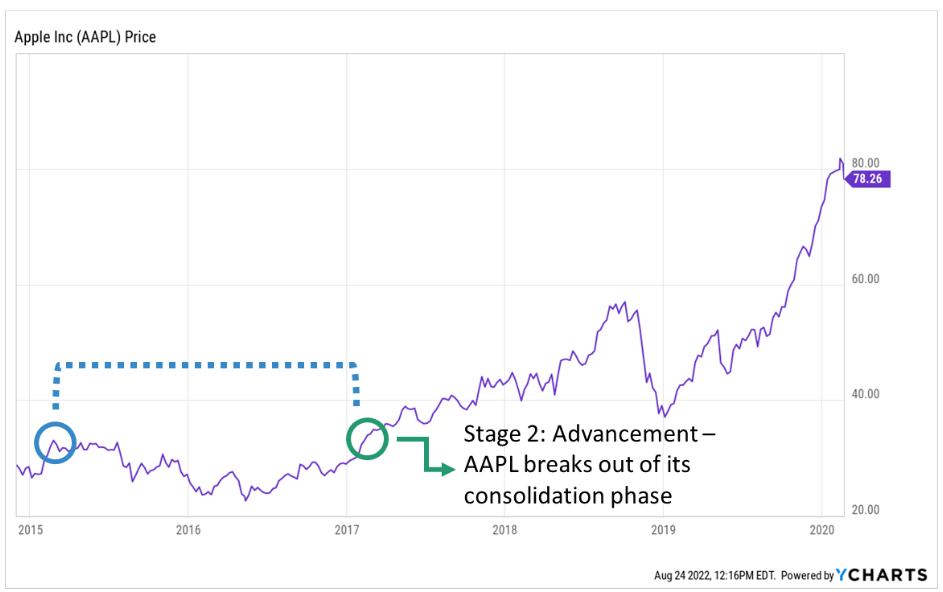
Stage-2 advancements are almost always characterized by a surge in trading volume. This is because more and more investors learn about the company, and they buy shares.
The increased buying power sends the stock even higher. This makes more people notice the stock and buy, which sends the stock even higher… which makes more people notice… and so on.
The stock enters a self-reinforcing “rally cycle.”
Buying begets more buying.
It’s a beautiful thing.
A Stage-2 rally can be kicked off by a variety of things – an incredible quarterly earnings report, news of a product breakthrough, excellent clinical trials results, or a positive report from an influential investor.
And this kind of rally can last for months, even a few years.
It’s not uncommon for top growth stocks to double or triple in value in less than a year during Stage-2 advancements.
Occasionally, stocks climb 4, 5, 6, even 10-fold.
Let’s return to the Apple example we’ve been working with. That stock soared 83% in less than two years.
Stage 3: Distribution
Now, no party lasts forever.
Eventually, every super-performing stock experiences a correction… a period of declining prices.
And as with other stages, this can be caused by a variety of things…
A decline in the broad market…
A serious but solvable problem at the company…
Or maybe investors just bid the company’s shares to very high valuations, and the stock needs to “take a breather” and return to more rational levels.
But before a correction takes hold, growth stocks typically experience what’s called a distribution stage.
This is a period when investors and traders who bought shares before the rally sell their positions and take profits.
They sell to less-informed investors who are only just now hearing about the stock and are arriving late to the party.
You can see Apple’s distribution stage below.
During this Stage 3, the stock is no longer soaring.
It typically trades in a sideways-to-lower pattern. This reflects the push and pull of investors who are sitting on big profits and selling to new investors who, again, are late to the party.
The Stage-2 buying frenzy marked a generally steady rise in prices. But the Stage 3 distribution period is characterized by a trading channel.
And then, the stock enters a correction.
Stage 4: Correction
This is the least-enjoyable part of a top-performing stock’s life cycle.
This stage is sort of like the hangover after a party.
As I mentioned earlier in this guide, no stock – no matter how great – goes up every day, every week, every year.
The market tends to go wild for elite growth stocks and bids them up to unsustainable levels.
Investors will bid growth stocks to levels that the fundamentals don’t currently justify.
Stage-4 corrections act to “wash away” the excesses and set realistic expectations for stocks.
Here’s Apple’s correction in late 2018.
Stage-4 corrections can come in different shapes and sizes. Stocks can correct 20%, 30%, 40%, even 60% from their highs. And these corrections can last months or even years.
After Stage 4, top growth stocks return to Stage 1, the consolidation stage.
They “lick their wounds” and spend some time trading sideways.
During this consolidation, top growth stocks continue to register increasing revenues and/or earnings. They build up power for their next leg higher.
Thanks to their growing businesses and now-lower share prices, they often sport attractive valuations… which allows us to make money in the next Stage 2.
Apple’s Long-Term Growth
The chart below shows the stock price of Apple from 2001 to early 2020.
As you can see, Apple regularly cycled through periods of consolidation, advancement, distribution, and correction during its extraordinary run. And they produced returns of 30,000%.
I’m a major proponent of long-term investing.
For people who don’t have the interest or time to follow the stock market every day or every week, it’s a great way to grow wealth.
As we’ve seen with Apple, you can make outstanding returns by holding a good stock through all its stages.
But if you’re interested in riding top growth stocks for short- to medium-term profits while avoiding what can be substantial, painful drawdowns, the lesson is clear…
Restrict your buying only to stocks entering Stage 2!
The Final Word on Profiting From Stage Analysis
Over the past year, my team of Caltech quants has developed a first-of-its-kind, advanced trading system. It scans the entire market and uses stage analysis to find only stocks that are entering major breakouts.
Not stocks in Stage-1 consolidation, Stage-3 distribution, or Stage-4 decline. Not even stocks in the middle or end of Stage-2 breakouts.
We’ve developed a system that finds stocks in the early innings of massive Stage-2 breakouts.
In doing so, we find winning stocks in every and any market.
And we are going to introduce that system to the public on Thursday, Jan. 19.
There’s always a bull market somewhere. And this quant system will find it.
Trust me. I’m sure you’re tired of the bear market crushing your portfolio. Punch back with a new investment strategy designed to line your pockets with cash.
It may be your best chance to make money over the next 12 months.
Click here to reserve your seat.
On the date of publication, Luke Lango did not have (either directly or indirectly) any positions in the securities mentioned in this article.

